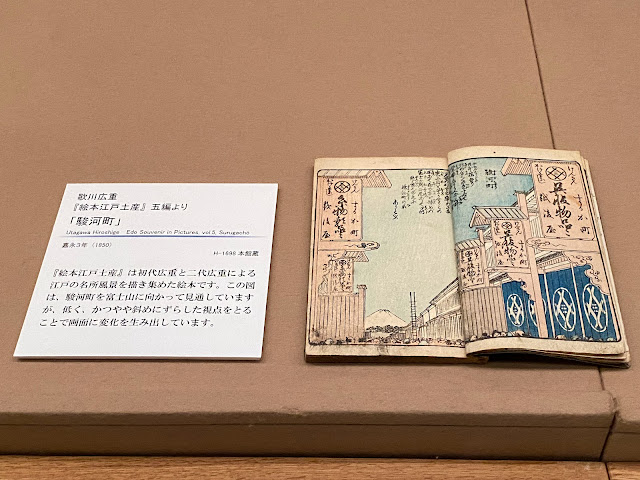新型コロナの感染状況を鑑みて、千葉の佐倉にある国立民俗博物館には、しばらく訪れなかった。
久しぶりの来館となったが、企画展示はなく、特集展示として”江戸のビスタ”という展示が行われていた。
ビスタとは、”家並みや並木のある通りを遠くまで見通した景色のこと”らしい。
江戸時代の後期、長い泰平の世が続き、経済が反映したこともあって、都の東京は空前の反映を謳歌していた。
それを表すものとして、歌川広重、歌川豊国、歌川国芳らの売れっ子浮世絵師たちが江戸の様子を描いた狂歌本や、江戸のビスタを描いた浮世絵や泥絵、現代のガイドブックのような買い物案内書など、興味深い品々が展示されていた。
江戸時代の日本は鎖国をしていたが、長崎を通じて西洋の絵画なども持ち込まれていた。その影響で、風景を立体的に描く透視図法は、日本の絵師たちにも定着していたようだ。
Given the infection status of the new corona, I did not visit the National Museum of Japanese History in Sakura, Chiba for a while.
It's been a long time since I visited the museum, but there was no special exhibition, and an exhibition called "Edo Vista" was held as a special exhibition.
Vista seems to be "a view of the streets with houses and trees from afar".
In the latter half of the Edo period, the long world of Taihei continued, and the economy reflected, so the capital Tokyo enjoyed an unprecedented reflection.
To express this, Hiroshige Utagawa, Toyokuni Utagawa, Kuniyoshi Utagawa and other popular ukiyo-e artists have drawn ukiyo-e books depicting the state of Edo, ukiyo-e and mud paintings depicting Vista in Edo, and shopping guides such as modern guidebooks. Interesting items such as books were on display.
Japan was isolated during the Edo period, but Western paintings were also brought in through Nagasaki. As a result, the perspective drawing method for drawing landscapes in three dimensions seems to have taken root in Japanese painters.






コメント
コメントを投稿